
185 posts
Latest Posts by sortasouthernhippie - Page 3

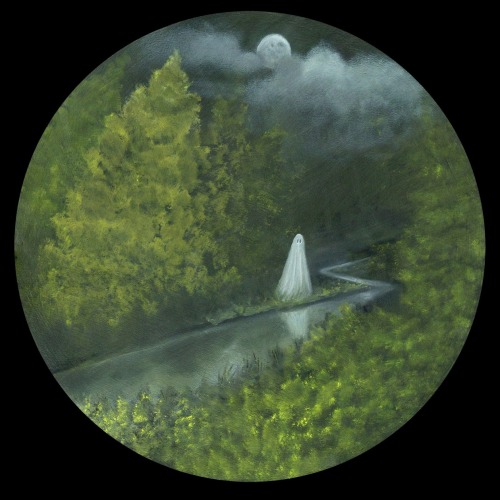
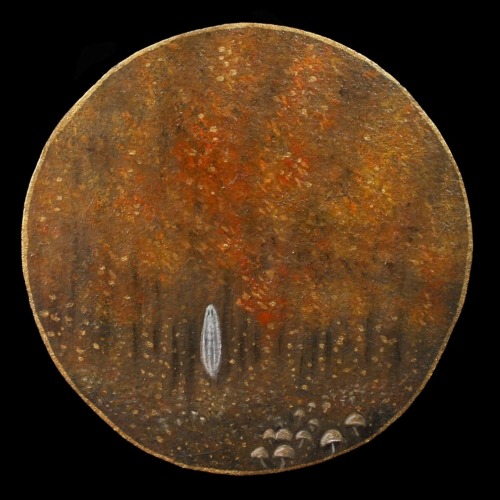
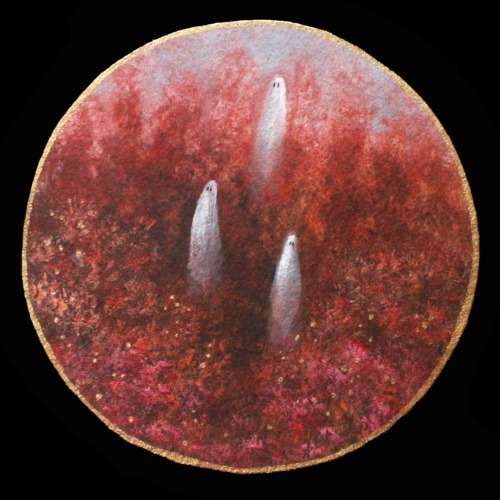



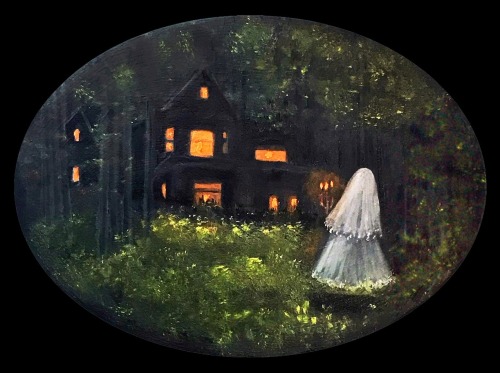
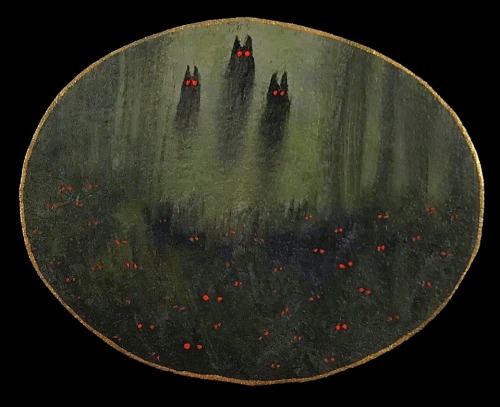

Art Prints
Wallflower Ghost on Etsy
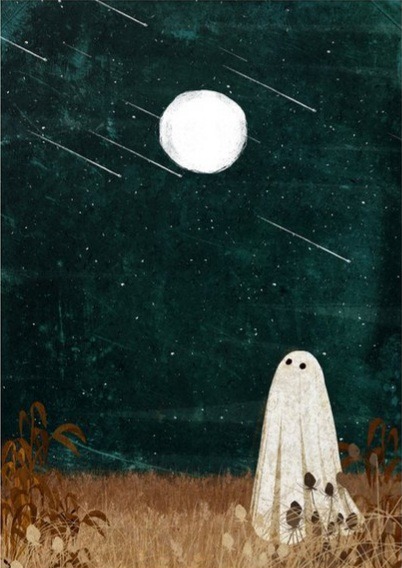






katherine blower ghosts
Intro to Spirit Work

Throughout history those who practice magic have had a close connection to the spirit world, from fairy doctors who were said to learn their craft from the fae, to ceremonial magicians invoking angels and demons, to witches working with familiar spirits. To practice magic is to open yourself to this connection and to become aware of a whole new world of intelligent beings.
In modern Western culture, there’s a lot of fear around working with spirits. There are countless horror stories about malevolent hauntings, seances gone wrong, and violent possessions. It’s easy to see why many new witches are reluctant to work with spirits.
Ironically, in most other times and places, the spirit world was and is accepted as a normal part of life. All over the world, since before recorded history, people have honored their ancestors, left offerings for local land spirits, and built relationships with deities. We’re actually the weirdos for not having a healthy relationship with the spirits around us.
I personally have found working with spirits to be incredibly rewarding, and being aware of the spirits around me adds a lot of depth to my spiritual practice and my witchcraft. As long as you do your research, keep your wits about you, and are polite, you have nothing to fear and everything to gain from working with spirits.
Some Philosophy Terms
Animism: defined by Merriam-Webster as “attribution of conscious life to objects in and phenomena of nature or to inanimate objects.” An animist believes that all things have a spirit, from animals and plants to rocks and even man-made objects. Animism is a big part of many magical practices, especially in folk magic. It’s also a part of several modern religions, including Shinto and Anito. I personally am an animist, and my magic includes connecting with the spirits of the plants, crystals, and objects I work with.
Pantheism: defined by Merriam-Webster as “a doctrine that equates God with the forces and laws of the universe.” A pantheist believes that the physical world is the Divine. Whereas an animist believes that all things have their own spirit, a pantheist believes that the entire world shares a single, divine spirit. Many Wiccans are pantheists, and in some cases pantheism can coexist with animism (all things are both individual spirits and part of the divine whole).
Panentheism: defined by Merriam-Webster as “the doctrine that God includes the world as a part though not the whole of his being.” A panentheist believes that the world is a part of the divine, but that there is also a part of the divine that exists beyond the physical world. Some Christian groups are panentheists. Another example of panentheism is ancient Egyptian religion, where natural objects like the sky and the sun were seen as the bodies (but not the souls) of the gods.
Which of these philosophies you resonate with will shape how you interact with spirits and the spirit world.

Types of Spirits
This is not by any means an exhaustive list, but here are some of the types of spirits witches commonly encounter or work with:
Ancestors: deceased human spirits, especially those with a familial link to you. Ancestor veneration is a huge part of some magic systems, as well as many religions. Some witches ask their ancestors for help in every single spell or ritual, while others honor their ancestors on certain days, like on Samhain or on a deceased loved one’s birthday. Honoring the ancestors is a good place to start with spirit work because they already have a connection to you and are more likely to be willing to help you. However, working with ancestors can be difficult if you don’t know your family’s history or if you don’t feel close to your family. As author Aaron Oberon says, “Sometimes ancestor work is undoing the blocks our ancestors have built.”
To begin connecting with your ancestors, start by researching your family history. Ask your living relatives about their parents and grandparents. Try your hand at genealogy research and see how far back you can trace your family. If you feel called to do so, you can create a special altar to honor your ancestors. Light candles and leave out offerings of food that your ancestors enjoyed while they were alive.
Land Spirits: spirits that embody and are connected to a natural object or landmark. There are many, many types of land spirits, from individual tree and plant spirits to the spirits of great mountains and rivers. Some land spirits are even worshiped as gods – like Hapi, the Egyptian god of the Nile. Some modern witches even choose to recognize cryptids like Mothman or the Jersey Devil as land spirits! Working with your local land spirits can help you develop a deeper connection to your environment and can make your magic feel more localized and personal.
To begin connecting with land spirits, start by learning about the biology and folklore of your local area. Offerings for land spirits are usually left outside, so be sure to offer things that won’t harm local wildlife. Wild bird seed, fresh fruit, and unsalted peanuts are a few examples of safe offerings.
Spirits of Place: spirits tied to a specific building or location. Unlike land spirits, these beings aren’t always connected to a natural feature. Houses and other buildings can have their own spirits that embody the energy of that place. In Germanic folklore, these spirits are called house wights or husvaettir, and in English folklore they’re called brownies. For people who grew up in non-animist cultures, it can feel strange to leave offerings for the spirit of a man-made building, but there’s a long history of these types of spirits being honored all over the world. I personally see house wights as being similar to land spirits.
If you want to begin connecting with the spirits of your home, start by greeting them by name and leaving out an offering for them. Establishing a relationship with the spirits of your living space can help you create a more harmonious and productive home. Traditional offerings for house wights include dishes of cream, grain-based porridge (like oatmeal or grits), and clean water.
Animal Spirits: the spirit of a specific animal, the archetypal Spirit (with a capital “S”) of an entire species of animal, or an individual spirit that appears as an animal. The concept of animal spirits that act as protectors and guides is found in many cultures, especially those with shamanic traditions. In Norse mythology, fylgjur were protector spirits who often appeared as animals. In British Traditional Witchcraft, witches work with familiar spirits that often take on animal forms. It’s worth noting that the terms “spirit animal” and “totem animal” come from Native American spiritual traditions and should not be used by people who don’t belong to those cultures. The concept of animal guides exists in other cultures, so there’s no reason to appropriate indigenous words and ideas. In my experience, animal spirits are often friendly and easy to connect with, so this is a good place to start for witches who are new to spirit work.
If you’d like to work with animal spirits, you can begin by connecting to the animals that are local to your area. You may feel called to bring a part of the animal you’re connecting with into your sacred space – for example, I keep crow feathers on my altar. Offerings depend on the type of animal spirit you’re connecting to – some require only fresh water, while some traditions state that familiars should be fed with blood (not human). Use your intuition to choose what works for you.
Fairies: fairies are a specific kind of land spirit, and most fairy lore is based on mythology and folklore from the British Isles. Fairies have a reputation in modern pop culture as being sweet, friendly creatures – some authors even compare them to angels! However, I think it’s important to remember that historically, fairies were known for being mischievous and sometimes dangerous. In folklore, fairies are less Tinkerbell and more Spiderwick Chronicles. As author Morgan Daimler says, “They can be cruel and vicious, or generous and kind. Some of them are helpful. Some are indifferent. And some of them think we make a very tasty meal indeed.” For this reason, fairies should be approached with caution.
If you want to honor the fairies in your practice, I recommend checking out Morgan Daimler’s books – they have several on this subject that are both easy to read and well-researched. There are a lot of rules for working with fairies, such as not telling them your full name and not saying “thank you” to a fairy, so this is one type of spirit that you should definitely research before beginning to work with them.
Angels: divine messengers; spirits of love and light that come from the Divine and have no physical form. Strictly speaking, “angel” refers to a messenger of the Abrahamic God, but there are other spirits from other religious traditions that fill a similar role. Angels and similar spirits embody divine love, and as such they are both incredibly powerful and incredibly supportive. Because of their loving nature, working with angels is a good place to start spirit work. Some witches who have had negative experiences with Christianity, Judaism, or Islam may feel uncomfortable working with angels. I have personally found that angels don’t really care how you identify in terms of religion, and have had good experiences with Christian angels even though I identify as pagan. However, your experiences may be different, so please don’t do anything that makes you uncomfortable!
There are a lot of bad resources floating around the Internet when it comes to angels. If you’re interested in working with them, I recommend Chantel Lysette’s books Azrael Loves Chocolate and The Angel Code. There’s also a YouTube channel called Ask Angels with Melanie Beckler – I don’t agree with 100% of her ideas, but it’s a decent free resource. Offerings to angels are typically non-physical, like the light from a candle or the smoke from incense.
Demons: spirits of mischief, strife, and/or evil with no physical form. In Western culture, we associate the word “demon” with Christianity, but demons appear in many other religions, including Hinduism and Kemetic paganism. I personally define “demon” as a spirit who: 1.) is not and never was human, and 2.) is antagonistic towards humans. Most witches only deal with demons when they’re trying to get rid of one. However, there are some magic traditions, such as Goetic Magic, that call on demons in magical rituals. Let me just say this: in my experience, there are very few reasons why someone would want to work with a demon, and doing so is as dangerous for the person doing the summoning as it is for the intended victim. I definitely recommend that new witches stay away from these spirits. (But it should be noted that demons are not the same thing as dark deities!)
If you need to get rid of a demon, sulfur is used in American traditions to banish them. (It may also banish helpful spirits, so keep that in mind.) Blessed water is used to repel demons in several cultures. You can also call on an angel or deity for protection.
Deities: powerful, divine spirits who are worshiped as gods. Deities vary a lot from culture to culture, and each deity has their own personality, moral code, and mannerisms. I have found working with deities to be very fulfilling, as deities allow us to put a human face on the Divine. It’s much easier to form a relationship with, say, Odin than it is with an abstract divine force, at least in my experience. Aside from spiritually fulfilling relationships, deities can also be powerful allies in magic. It’s worth noting that very few deities are 100% good or 100% bad – they’re more nuanced than that. Just like anyone else, deities have strengths and weaknesses. (Yes, even the Abrahamic God. Read the Old Testament sometime and tell me God doesn’t have flaws.)
If you are interested in working with deities, start by doing research into the pantheons you feel drawn to. Were you obsessed with Greek mythology as a kid? (Or Norse? Or Egyptian? Or any other culture?) Read up on it! Find out how those deities were worshiped historically, and use that as a starting point for building your own practice. Offerings for deities vary from culture to culture, but I’ve found that fresh, clean water seems to be pretty much universally accepted.
This post ended up just being a whole lot of vocab, but I wanted to get some definitions straight before I start writing about how to connect with the spirit world. In my next post, I’ll talk about how to introduce yourself to different types of spirits and etiquette for maintaining a healthy relationship!
Resources:
Southern Cunning: Folkloric Witchcraft in the American South by Aaron Oberon
A Practical Heathen’s Guide to Asatru by Patricia M. Lafayllve
Where the Hawthorn Grows by Morgan Daimler
Wicca: A Guide for the Solitary Practitioner by Scott Cunningham
Temple of the Cosmos by Jeremy Naydler
Azrael Loves Chocolate, Michael’s A Jock: An Insider’s Guide to What Your Angels Are Really Like by Chantel Lysette

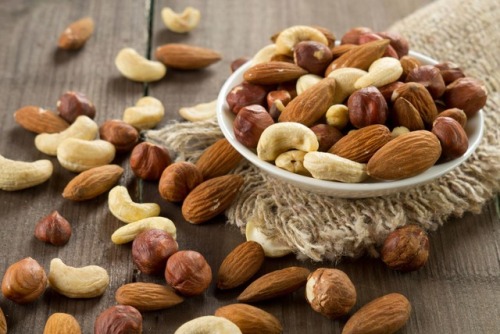
Magical Properties of Nuts
Almond (mental clarity, abundance, healing) Black Walnut (mental clarity, manifestation, protection, healing) Brazil Nut (grounding, love, balance) Cashew (prosperity, love, communication) Coconut (confidence, strength, glamour) Chestnut (abundance, protection, warding, love) Hazelnut (abundance, glamour, self love, wisdom, protection) Macadamia Nut (love, abundance, protection) Peanut (stability, energy, manifestation) Pine Nut (purification, prosperity, warding) Pecan (longevity, prosperity, spiritual purification, protection) Walnut (abundance, healing, mental clarity, luck)

I'm a solid 8 right now.
when i die i want u all to come to my grave and put stickers on it
this is my old acc but this still rings true
im just really fucking tired. im too young to deal with the weight of a dying world.





this ^^ bc my husband cannot wrap his head around the fact that when he reality checks me when im paranoid im convinced hes the thing i should be afraid of
i cannot make this any clearer to apsychotic people and people who don't experience paranoid psychosis: one of the WORST things you can do for paranoid psychotic people is try to give a reality check unprompted. reality checks ARE a very useful tool when used correctly, but if i don't know you or trust you implicitly and you attempt to reality check me, i will simply assume you're in on whatever delusion i'm experiencing. it's literally that simple. you are not able to reality check me or any other stranger because you are not inherently a trustworthy source. attempts to give reality checks completely unprompted, for many psychotic people, just solidifies the delusion
this includes posts that say shit like "no one is reading your mind right now. your thoughts are your own" "no one is watching you right now" etc. if you reblog that sort of thing as an apsychotic person untagged you are not an ally to ANY psychotic person who has chronic and/or easily triggered psychosis. chances are, when you put that on my dash, i most likely WASN'T in that moment thinking someone was reading my thoughts. but you put a mention of mindreading on my dash completely untagged and NOW i sure as fuck am. and if i WAS already thinking that someone was reading my thoughts, some rando telling me otherwise is not gonna help ground me or bring me back to reality. unless it's coming from myself or from a specific trustworthy person who has permission to give me a reality check, that reality check is only gonna make me more paranoid, and i know this is the case for many other psychotic people as well
i've seen some people claim that reality checks are never helpful, and that's definitely not true imo. reality checks are an important part of recovery and symptom management for people with chronic psychosis (people with schizophrenia, for example), but they should ONLY ever be done by the person experiencing the psychosis, or someone who has been granted permission by the person experiencing psychosis. a random reality check on a psychotic person's tumblr dash is quite literally useless and 100% performative





1920s Funeral Mortician Antique Embalming Makeup Kit
30 + Pieces - Kelmetics Powders, Wax & Creams
Ever seen a psychotic friend having a bad time, but didn't reach out cause you didn't know how to help? Here's a basic guide for you!







Psychotics (especially schizophrenics <3!!) out there, if you disagree with this or have more to add feel free to add on in the reblogs!!









$139,000/5 br
Hardwick, VT


Aura Forms by New Specimen





Natasha Lyonne as Vivian in ‘Slums of Beverly Hills’ (1998)
You do not have to be polite when your boundaries are crossed
When I tell people about my religion they immediately assume that I’m sacrificing children or selling my soul but in reality I’m like. Shiny rock make room happy.

☘ Irish Cream Cheesecake ☘
Imagine: a forest clearing and a cottage. you’re drying herbs and your favorite record is playing on your record player. you’ve got muffins in the oven, and a gentle breeze is coming through the windows. you’re happy, and everything is right.
Book of Shadows Ideas that Aren’t Basic
sacred geometry
what damages crystals
what is a crystal grid and how do i make one?
candle flame reading
bone correspondences
what is a poppet? how do i use it?
basic alchemical symbols
ways to break a hex
favorite cryptids and their lore
what is your philosophy on witchcraft?
what is a liminal space?
scrying
how to trap a spirit in a jar or mirror
ghost hunting
species of demons
witchy books you’ve read, and a review or rating of the book (go to archive.org for free pdfs for books)
Tamarind - Love
Tangerine - Purification, Energy, Calming, Joy
Tansy - Warding Off Evil, Protection, POISONOUS DON‘T CONSUME AND DON’T PUT ON SKIN
Tarragon - Healing, Compassion, Love, Consecration
Tea Leaves - Different Ones Have Different Purposes
Tea Tree Oil - Protection, Strengthening, Purification
Thistle - Healing, Protection, Warding Off Unwanted Visitors and Thieves
Thyme - Health, Healing, Sleep, Psychic Powers, Love, Purification, Courage
Toadflax - Protection, Hex Breaking
Tobacco - I’m not going to put the purposes because tobacco causes cancer as well as many other terrible health issues. Please do not chew, burn, smoke or consume tobacco in any way.
Tomato - Protection, Prosperity, Love
Tonka Bean - Love, Money, Luck, DO NOT INGEST THIS CAUSES ORGAN DAMAGE
True Unicorn Root - Hex-breaking, Protection, DO NOT INGEST, ESPECIALLY WHILE PREGNANT
Tuberose - Healing, Peace, Psychic Powers, Love
Turmeric - Fertility, Protection, Health
Turnip - Ending Relationships, Protection


🥚✨🌿🌙 Healthful Egg Muffins for a Witchy but Hearty Breakfast.
Ingredients: - 5 eggs. - ¼ cup of milk. - A few taps of garlic powder. - Diced breakfast sausage. - Bacon pieces. - Shredded cheese. - Any herbs, vegetables, good green stuff you wish to add (kale, broccoli, rosemary, basil, etc). - Black pepper.
Directions: 1. Crack open the eggs and whip until fully mixed; add in milk to make the results extra fluffy. Tap a bit of garlic powder and black pepper to taste into the mixture. Set aside. 2. Separately, prepare the breakfast sausage and bacon however you like to do it. I like to use microwavable breakfast sausage and pre-packaged bacon bits for convenience sake (plus it’s less expensive!). 3. Pour the egg mixture into the cups of a muffin tin, leaving room to add the other ingredients. 4. Into the tins drop in as much bacon, sausage, cheese, and herbs as you want so long as you don’t overflow the cups. This is where you can get a little witchy; look up herb correspondences and set intentions if you wish, or just make a tasty and easy breakfast ! 5. Bake at 400 degrees for 15 minutes or until brown on the top.
You can make big batches, as well, since these keep very well in the fridge! These will last up to five days if kept refrigerated; just pop in the microwave for 20 seconds to reheat them. This is a very easy and healthy breakfast to make that’ll last you a whole work week/school week, keep you full through morning, and give you plenty of protein. ♥

For witchcraft practitioners who work with plants, be it in spells, charms, being tactile in nature or gardening, this list contains some of the plants that can bring harm if used incorrectly or have a high level of toxicity.
Always be cautious and so research on any plant or herb you’re planning to utilize or grow.
Rosary Pea (Abrus precatorius) • Ingesting a single seed can kill an adult human. Symptoms of poisoning include nausea, vomiting, convulsions, liver failure, and death, usually after several days.
Wolfsbane (Aconitum spp) • All parts are poisonous, if ingested, it usually causes burning, tingling, and numbness in the mouth, followed by vomiting and nervous excitement. Even casual skin contact should be avoided. Symptoms include numbness, tingling, and cardiac irregularity.
White Baneberry (Actaea pachypoda) • All parts are poisonous, especially the berries, the consumption of which has a sedative effect on cardiac muscle tissue and can cause cardiac arrest.
Arnica • Poisonous in great quantities. Symptoms of poisoning include gastroenteritis, fever, nausea, dizziness, abnormal cardiac frequency, diarrhea, skin reaction and internal hemorrhage in the digestive system.
Azalea (Rhododendron simsii) • If ingested it is poisonous. Continued contact should be avoided. Symptoms of poisoning are nausea, depression, respiratory difficulties, coma. It is rarely lethal.
Anthurium (Anthurium spp) • Prevent getting in contact with the sap. Symptoms are skin irritation and eye irritation.
Cedronella canariensis • Can cause skin irritation, indigestions. Should not be used or touch by pregnant people or lactating people.
Belladonna (Atropa belladonna) • Extremely poisonous, it is lethal and it can be absorbed through skin. Symptoms of poisoning are fogged vision, staggering, loss of balance, dry mouth and throat, headache, skin eruptions, constipation, confusion, hallucination and convulsion.
Lamprocapnos spectabilis • Can be poisonous in big quantities, which causes convulsions and other symptoms in the nervous system.
Iris versicolor • Symptoms pf poisoning include nausea, vomit, mouth and throat irritation, irritation on the digestive system, skin irritation, headache and epiphora.
Bryony • All parts are poisonous and any type of contact causes death.
Ranunculus • If ingested, the juice can cause serious damage to the digestive system.
Acorus calamus • Toxic in big quantities, can cause hallucination, nausea and vomit.
Physostigma venenosum • Extremely toxic, can cause intense sweating, extreme salivation, nausea, vomit, diarrhea, irregular cardiac rhythm, change in blood pressure, confusion, convulsion, coma, muscular weakness, paralysis, respiratory difficulties and death.
Cinnamomum camphora • Skin rash, itchiness, respiratory difficulties, mouth, eyes, face or lips swelling.
Ricinus communis • Poisonous. Can cause burning in the mouth and throat, abdominal pain, bloody diarrhea. At a long period of intoxication, can cause dehydration, low blood pressure. If not treated, death will occur in 3 to 5 days
Daphne • Poisonous. Causes burns in the mouth and digestive tract, followed by coma. Can cause death.
Vinca • Must not be ingested, causes nausea, vomit, loss of hair, loss of hearing, dizziness, bleeding, nervous difficulties, convulsions, liver damage and death.
Asclepias tuberosa • Cardiac difficulties, nausea, vomit and skin rash.
Agave spp • The juice of a number of species causes acute contact dermatitis, with blistering lasting several weeks and recurring itching for several years thereafter.
Columbine (Aquilegia spp) • Seeds and roots contain cardiogenic toxins which cause both severe gastroenteritis and heart palpitations if consumed, columbine poisonings are easily fatal.
Mercurialis perennis • Symptons happen after some hours, they include vomit, pain, gastritis, renal inflammation and sleepiness.
Colocasia • All parts are poisonous and cause mouth and tongue irritation. Can be fatal.
Gelsemium • Extremely poisonous, even in low quantities. Causes headache, problems with vision, difficulty swallowing, dizziness, muscular complications, convulsions, respiratory complications and low blood pressure.
Laburnum • Causes excitation, loss of balance, convulsions and coma. Can be lethal.
Helleborus • Dangerous if ingested or applied on the skin. Cause irritation in the mouth and throat and low blood pressure. Big quantities can cause vomit, diarrhea, difficulties swallowing, nervous system complications, blindness, convulsion, paralysis, respiratory complications and death.
Ilex aquifolium • The fruits can be lethal and the leaves cause diarrhea, nausea, vomit, stomach and intestine complications.
Hedera helix • Causes stomach pain, respiratory complications and possible coma.
Impatiens capensis • Dangerous when ingested in big quantities.
Datura stramonium • Don’t inhale or ingest. Causes dry mouth, extreme thirst, vision complications, nausea, vomit, constipation, tachycardia, hallucinations, fever, convulsion, loss of conscience, respiratory complications and death.
Convallaria majalis • Causes irregular blood pressure and cardiac rhythm, indigestion and confusion.
Mandragora officinarum • Fogged vision, dry mouth, difficulties to urinate, headache, tachycardia, vomit and hallucinations.
Viscum album • Gastrointestinal discomfort, diarrhea, low blood pressure, convulsion. It is rarely lethal for humans.
Morning glory (Ipomoea tricolor) • Diarrhea, indigestion, disorientation, loss of apetite, ataxy and hallucinations.
Artemisia vulgaris • Prolonged contact may be fatal, so it’s best to use in a open and ventilated place.
Oak (Quercus): In big quantities is poisonous and affects the renal kidneys.
Nerium oleander • Causes cardiac complications, indigestion and can cause death.
Taxus baccata • Fatal. No symptoms come as a warning.
Hypericum perforatum • Causes fatigue, dizziness, confusion, dry mouth and can affect medicaments.
Angel’s Trumpet (Brugmansia spp) • All parts of this plant contain toxins and are often fatal. Effects of ingestion may include losing connection with reality and hallucinations.
Foxglove (Digitalis purpurea) • The leaves, seeds, and flowers are poisonous. These cause irregular heartbeat, general digestive upset, and confusion; can be fatal.
Hyacinth (Hyacinthus orientalis) • The bulbs are poisonous, causing nausea, vomiting, gasping, convulsions, and possibly death. Even handling the bulbs can cause skin irritation.
Hydrangea (Hydrangea spp) • Hydrangeas are moderately toxic if eaten.
Frangipani (Plumeria spp) • Contact with the milky latex may irritate eyes and skin.


My great-aunt used to comb her hair 100 times every day to maintain her lucious locks.
Although I don’t think you necessarily have to comb it that much, combing your hair can be very beneficial to hair growth since it stimulates blood flow in the scalp, and evenly spreads the natural oils it produces.
To sprinkle a little magick into tradition I created this little spell. I’d recommend using a wooden brush since it’s eco-friendly and it spreads the oil much better. Repeat these words as you gently brush through, envisioning your hair growing:
“Grow, grow fast as weeds, soft as snow, so mote it be!”
Additionally, you can make some hair oil to add if you have very long, thick hair (like me), or dry; especially important at the tips of your hair to prevent breakage. Careful not to tug too hard! Detangeling your hair first may help.
🕊Hair Oil
Apricot seed oil, coconut oil, sunflower seed oil, vitamin E oil, lavender essential oil, jasmine essential oil, rose essential oil, dried rose and jasmine buds (I removed them after a few weeks to so that the oil would come out easier from the bottle)
Lavender Syrup

This recipe is great for a syrup to add to your tea or coffee for a little sweetness and flavor. It’s really good for simple spells as well and can be put out as an offering to fae and spirits alike. I like to add it to my tea at night for visions while I sleep. I also have started using it as an offering to one of my spirit companions and they love it.
1 cup water
2 cups white granulated sugar or sugar substitute
3 tablespoons - ½ cup lavender*
STEPS
Place water and lavender into a saucepan and bring to a boil.
Add in sugar or sugar substitute; stir until the sugar has dissolved completely before turning down the heat and allowing simmering for 15 minutes
Make sure to stir it every so often as to make sure nothing on the bottom burns
Remove from heat, cover, and allow the syrup to cool for ½-1 hour. The longer that you let it sit the more intense the flavor it will be.
Once it is cool, strain of the lavender and transfer into a jar. Store in the fridge
*The more lavender that you add the more intense the flavor will be as well. I personally use ½ cup of lavender for a more intense smell and flavor. As well as let it sit for an hour in the pot as it cools. The longer that you let it seep the darker the color will be too. It turns out to be a lovely purple color regardless.
Depending on the type of tea you use too will depend on
Salted Honey Pie 🍯

An old fashion pie recipe that’s super simple to make and a great Ostara/Spring Dessert! I’m making one for this Easter with my family.
Honey, Eggs, Cream are all Spring Foods. Honey symbolizes sweetness and the rewards of hardwork just like the little bees that work so hard to make it! 🐝
And Salt banishes negativity and is purifying!
This dessert is perfect for getting rid of the stress or worry of Winter and welcoming any sweet rewards from your hardwork in the future this Spring!
Ingredients:
One 9 inch Pie Crust (Store bought or one of your favorite crust recipes)
½ Cup of Melted Butter
¾ Cup of White Sugar
2 Tbs of Cornmeal
¼ tsp of Salt
¾ Cup of Honey
2 Eggs + 1 Egg Yolk
½ Cup of Cream
2 tsp White Vinegar
1 tsp of Vanilla Extract
Salt Flakes for Garnish
Preheat your oven to 350. In a large bowl, mix together your dry ingredients before slowly mixing in your wet ingredients one at a time…. (I never do this and just mix it all together randomly as I go, but it’s up to you.)
Feel free to add a sigil to the base of the pie crust. This is mine -
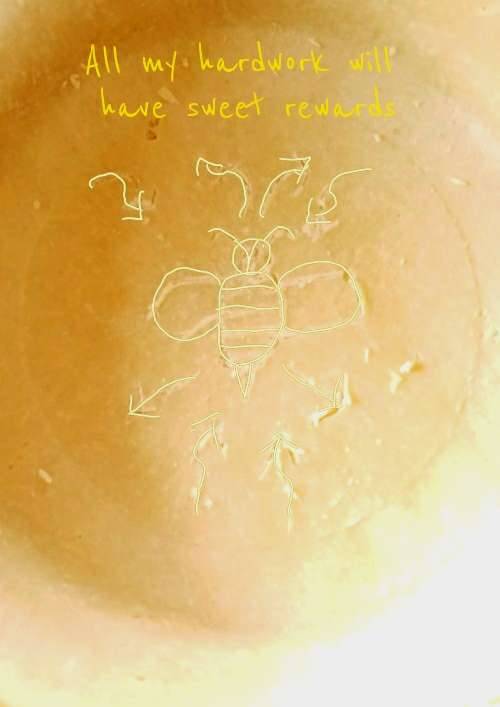
Pour mixture into your pie crust, it will be liquid and thin; that’s okay!

Cook for 45 to 60 minutes or until the top is golden brown and it starts to bubble.(I recommend 60 minutes on the middle rack. Mine didn’t burn at all!)

Take it out of the oven and let it cool for One hour or more to let it solidify. This step is very important to make sure it isn’t too liquidy. The consitancy should be like Pecan Pie Filling.
Garnish with Sea Salt or Himalayan Salt; any big salt flakes. But regular table salt will do just fine if the others aren’t available.
Done! 🍯🐝🍽😋
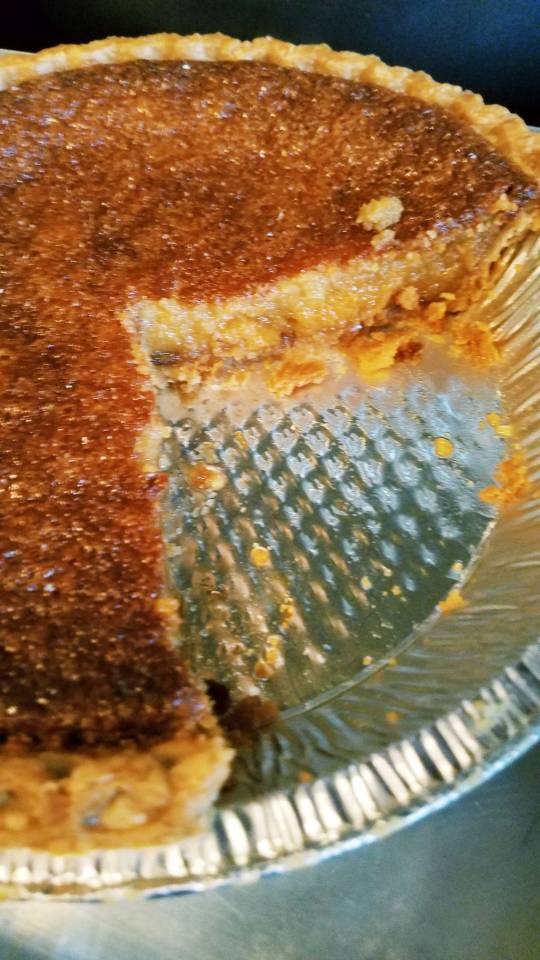
This can be used for Litha too!







Cat collection